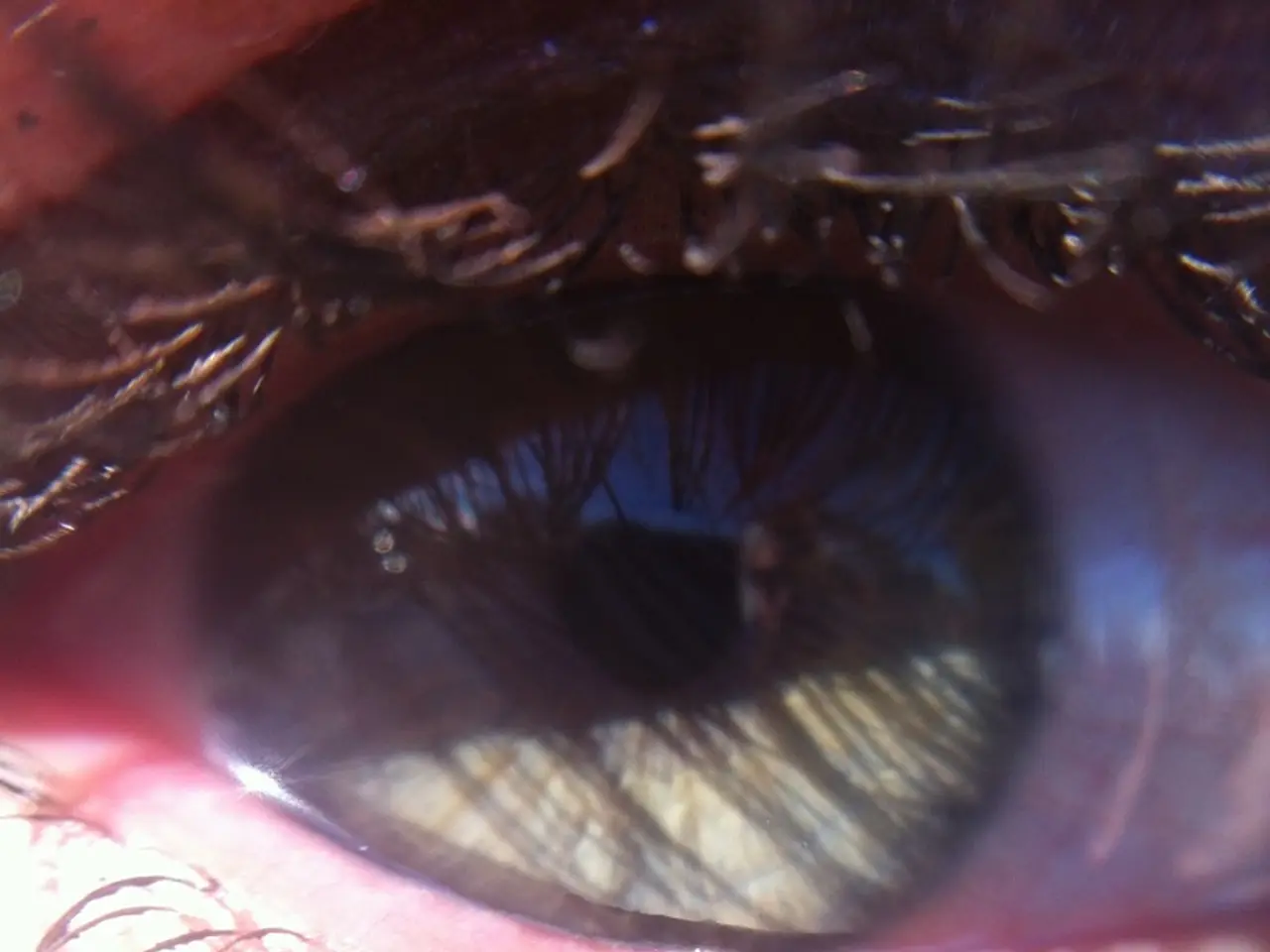Eye irritation: Causes, when to consult a medical professional, and remedies
Eye conditions can range from mild and temporary to severe and potentially sight-threatening. Understanding the causes, symptoms, and treatments of common eye conditions can help individuals manage their eye health effectively. In this article, we will discuss conjunctivitis, styes, chalazia, cellulitis, ocular herpes, and sore eyelids caused by injuries.
**Conjunctivitis**
Conjunctivitis, also known as pink eye, is a condition that inflames the clear layer of tissue lining the front of the eye, known as the conjunctiva. Causes of conjunctivitis include bacterial and viral infections, allergies, and substances that irritate the eyes. Symptoms can include redness, irritation, discharge (watery for viral and allergic, thick yellow/green for bacterial), and itching. Treatment depends on the type, with antibiotic drops for bacterial, antihistamines for allergic, and rest for viral.
**Styes**
A stye is a painful bump that can develop on the eyelid or the base of the eyelash due to bacterial infection of a Meibomian gland. Symptoms can include tearing, light sensitivity, and a scratchy sensation in the eye. Treatment typically involves hot compresses, antibiotic ointments, and maintaining hygiene.
**Chalazia**
Chalazia are swollen bumps that form on the eyelid due to a blocked Meibomian gland. Unlike styes, chalazia are usually not painful, but they can become tender as they grow and cause the entire eyelid to swell and blurry vision. Treatment may involve warm compresses, antibiotics if necessary, and sometimes surgical removal.
**Cellulitis**
Cellulitis is a serious bacterial infection that develops in the deeper layers of the skin and can affect the eyelids and soft tissues of the eyes. Symptoms can include redness or discoloration and swelling in and around the eyes, bulging eyes, pain or difficulty when moving the eyes, vision problems, fever, fatigue, and facial swelling. Treatment usually involves oral or intravenous antibiotics, and a healthcare professional may also need to drain fluid from the affected eye.
**Ocular Herpes**
Ocular herpes, or herpes keratitis, is an eye infection that results from the herpes simplex virus (HSV), which is the same virus that causes cold sores. Symptoms can include pain, redness, light sensitivity, and vision disturbances. Treatment requires antiviral medications.
**Sore Eyelids**
Sore eyelids can be caused by a variety of factors, including infections, injuries, and improper contact lens use. In more severe cases, a healthcare professional may prescribe antibiotic eye drops or oral antibiotics for people with a bacterial infection. People with symptoms of ocular herpes should seek medical attention to reduce the risk of complications. Eye injuries from blows or eye surgery can lead to a sore or swollen eyelid. Injuries to the eye can lead to infection.
**When to Seek Medical Attention**
Individuals should seek medical attention for sore eyelids if they experience severe pain, vision disturbances, significant swelling or redness that spreads beyond the eyelid, fever, thick yellow or green discharge, or if symptoms do not improve with home care or worsen over time. Early medical intervention can prevent complications such as periorbital cellulitis or chronic conditions like chalazia.
Maintaining good eye hygiene can help reduce the risk of experiencing sore eyelids and other eye problems. Practicing good eye hygiene includes handling contact lenses with clean hands, storing them correctly, and not wearing them for longer than the optician or manufacturer recommends, wearing appropriate protective eyewear, such as goggles and face masks, when playing sports or doing anything where there is a potential risk to the eyes, avoiding allergens whenever possible, and wearing sunglasses during pollen seasons. Using hypoallergenic and fragrance-free products can also reduce the risk of eye irritation.
Always wash hands before and after touching the eyes, and visit a dedicated hub for more research-backed information and in-depth resources on eye health.
- People with diabetes, a type of disease that affects the body's ability to process sugar, may be at a higher risk of developing certain eye conditions, such as Diabetic Retinopathy.
- Science has made significant strides in predictive healthcare, allowing for early detection and treatment of diseases like colitis, an inflammatory bowel disease that affects the colon, through non-invasive testing methods.
- Mental health conditions like bipolar disorder can cause dramatic mood swings, which may lead to irregularities in a person's sleep patterns and overall health, including an increased risk of conditions such as lung cancer.
- Some common sources of bacterial infections include open wounds, like those caused by ulcerative colitis, a type of inflammatory bowel disease affecting the colon.
- In the realm of health-and-wellness, managing conditions like Crohn's disease, an inflammatory bowel disease that may affect any part of the digestive tract, involves monitoring symptoms, maintaining a balanced diet, and adhering to a strict medication regimen.
- HIV, a viral disease that weakens the immune system, can increase the risk of developing both bacterial and viral eye infections, such as conjunctivitis.
- Asthma, a chronic lung condition, can sometimes be linked to migraines, involving episodes of severe headache and sensitivity to light and sound.
- Psoriasis, a chronic skin disease characterized by red, scaly patches, may also affect joints, potentially leading to arthritis.
- Cancer, a disease marked by uncontrolled cell growth, can spread from one part of the body to another, including the eyes and surrounding tissues in cases of metastatic cancer.
- It is essential to seek immediate medical attention for conjunctivitis if the symptoms do not improve with over-the-counter remedies or worsen over time, as it may lead to more severe conditions like blindness.
- AQ (Air Quality) sensors can play a crucial role in managing asthma, alerting individuals to periods of poor air quality, which can exacerbate asthma symptoms and trigger an asthma attack.




